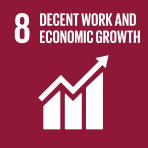Abstract
The IMF’s upcoming Special Drawing Rights (SDR) allocation will provide urgently needed liquidity for countries struggling to meet their crisis-related spending needs and boost resilience against global financial volatility. But, under current quotas and with severe fiscal and financial constraints in many countries, it will not be enough. A voluntary channeling of SDRs to the benefit of vulnerable countries is needed. The potential large size of such also presents an opportunity to move beyond the urgent provision of liquidity toward dealing more systematically and effectively with interlinked debt and development challenges. This will be necessary to safeguard development prospects in the large number of countries that are highly debt-vulnerable, face huge future spending gaps, and are heavily exposed to external shocks, such as from climate change. To deal more effectively with future liquidity risk, an SDR-funded or backed mechanism could offer a range of state-contingent debt instruments that automatically reduce the debt-service burden and refinancing risk based on pre-determined “triggers” tied to external factors or key economic variables. To deal more effectively with solvency problems, SDRs could be channeled toward concessional funding support for countries coming out of debt-restructuring conditional on sufficient treatment of debt, full transparency, and fair burden sharing between creditors. Finally, as a development objective, SDRs could be channeled to target climate vulnerabilities. This would make sense not only because it would adhere to a global fairness principle, but also because debt and climate-vulnerabilities are highly correlated, climate change will intensify in the future, and because of the transmission channels from climate risk to financial and economic stability risk.
- 24 Jun 2021


